
Bartolomeu Dias, a nobleman of the Portuguese royal household, was a Portuguese explorer. He sailed around the southernmost tip of Africa in 1488, the first European to do so, setting up the route from Europe to Asia later on. Dias is the first European during the Age of Discovery to anchor at what is present-day South Africa.
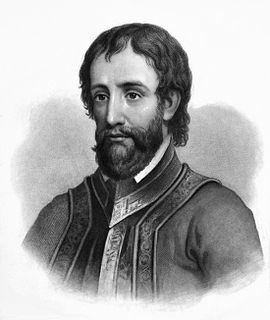
Hernando de Soto was a Spanish explorer and conquistador who was involved in expeditions in Nicaragua and the Yucatan Peninsula, and played an important role in Pizarro's conquest of the Inca Empire in Peru, but is best known for leading the first Spanish and European expedition deep into the territory of the modern-day United States. He is the first European documented as having crossed the Mississippi River.
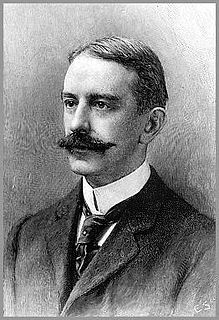
Frederick George Jackson was an English Arctic explorer remembered for his expedition to Franz Josef Land, when he located the missing Norwegian explorer Fridtjof Nansen.

William Baffin was an English navigator and explorer. He is primarily known for his attempt to discover a Northwest Passage from the Atlantic to the Pacific, during the course of which he was the first European to discover Baffin Bay in present-day Canada. He was also responsible for exceptional surveys of the Red Sea and Persian Gulf on behalf of the East India Company.

Operation Highjump, officially titled The United States Navy Antarctic Developments Program, 1946–1947, was a United States Navy operation organized by Rear Admiral Richard E. Byrd, Jr., USN (Ret), Officer in Charge, Task Force 68, and led by Rear Admiral Richard H. Cruzen, USN, Commanding Officer, Task Force 68. Operation Highjump commenced 26 August 1946 and ended in late February 1947. Task Force 68 included 4,700 men, 13 ships, and 33 aircraft. Operation Highjump's primary mission was to establish the Antarctic research base Little America IV.

Admiral Sir Francis Leopold McClintock was an Irish explorer in the British Royal Navy, known for his discoveries in the Canadian Arctic Archipelago. He confirmed explorer John Rae's controversial report gathered from Inuit sources on the fate of Franklin's lost expedition, the ill-fated Royal Navy undertaking commanded by Sir John Franklin in 1845 to be the first to traverse the Northwest Passage.
Colonel Norman Dane Vaughan was an American dogsled driver and explorer whose first claim to fame was participating in Admiral Byrd's first expedition to the South Pole. He also ran dog teams in a professional capacity as part of a search and rescue unit in World War II, in sporting events like the Olympics and the Iditarod Trail Sled Dog Race, and in three Presidential Inauguration ceremonies.
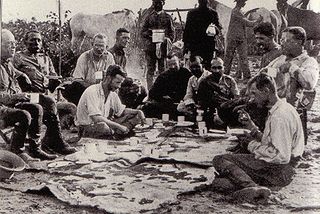
The Roosevelt–Rondon Scientific Expedition was a survey expedition in 1913–14 to follow the path of the Rio da Dúvida in the Amazon basin. The expedition was jointly led by Theodore Roosevelt, the former President of the United States, and Colonel Cândido Rondon, the Brazilian explorer who had discovered its headwaters in 1909. Sponsored in part by the American Museum of Natural History, they also collected many new animal and insect specimens. The river was eventually named "Rio Roosevelt" for the former president, who nearly died during the voyage.
The Ronne Antarctic Research Expedition (RARE) was an expedition from 1947–1948 which researched the area surrounding the head of the Weddell Sea in Antarctica.

Sir James Clark Ross was a British Royal Navy explorer known for his exploration of the Arctic with Sir William Parry and Sir John Ross, his uncle, and in particular, his own expedition to Antarctica (1839-1843).

Weyprecht Mountains is a small group of mountains about 15 km (9 mi) west of the Payer Mountains, forming the western half of the Hoel Mountains in Queen Maud Land.
The 1905 Home Nations Championship was the twenty-third series of the rugby union Home Nations Championship. Six matches were played between 14 January and 18 March. It was contested by England, Ireland, Scotland and Wales.
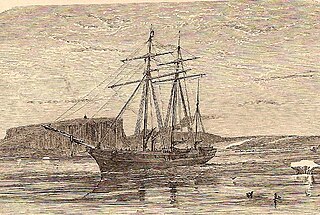
The steam yacht Fox was the vessel that Francis Leopold McClintock commanded in 1857-1859 on an expedition to the Arctic in northern Canada to search for the fate of the missing expedition of Sir John Franklin.
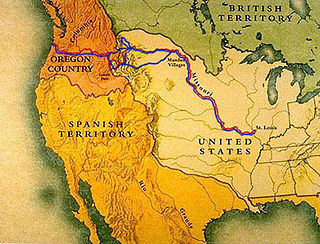
This is a bibliography of literature dealing with the Lewis and Clark Expedition.
John Knight was a British explorer of Greenland and Labrador. He is known for two expeditions: he was a member of a Danish exploration of the coast of Greenland, and he led an expedition to discover the Northwest Passage, during which he was lost.
European land exploration of Australia deals with the opening up of the interior of Australia to European settlement which occurred gradually throughout the colonial period, 1788–1900. A number of these explorers are very well known, such as Burke and Wills who are well known for their failed attempt to cross the interior of Australia, as well as Hamilton Hume and Charles Sturt.












